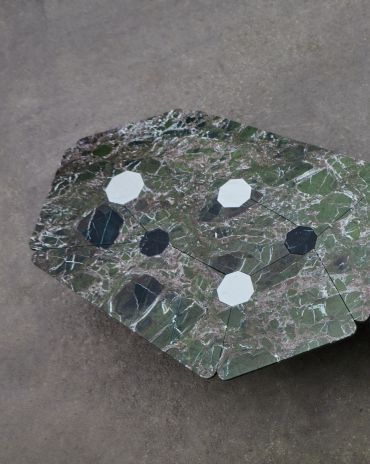Copyright © 2025 Motivate Media Group. All rights reserved.
This home in Beijing features traditional Chinese furniture within contemporary surroundings
Traditional golden nanmu wood furniture collection is the main protagonist of the interiors

With offices in Tokyo, Beijing and Shanghai, Japanese architects Yoshihiko Seki and Saika Akiyoshi joined forces to launch their design studio in 2013 under the enigmatic and poetic name KiKi ARCHi.
“KiKi in Japanese is a sense of appreciating things, which means mastery, attainment and unique opinions of things in various fields,” the co-founders describe.
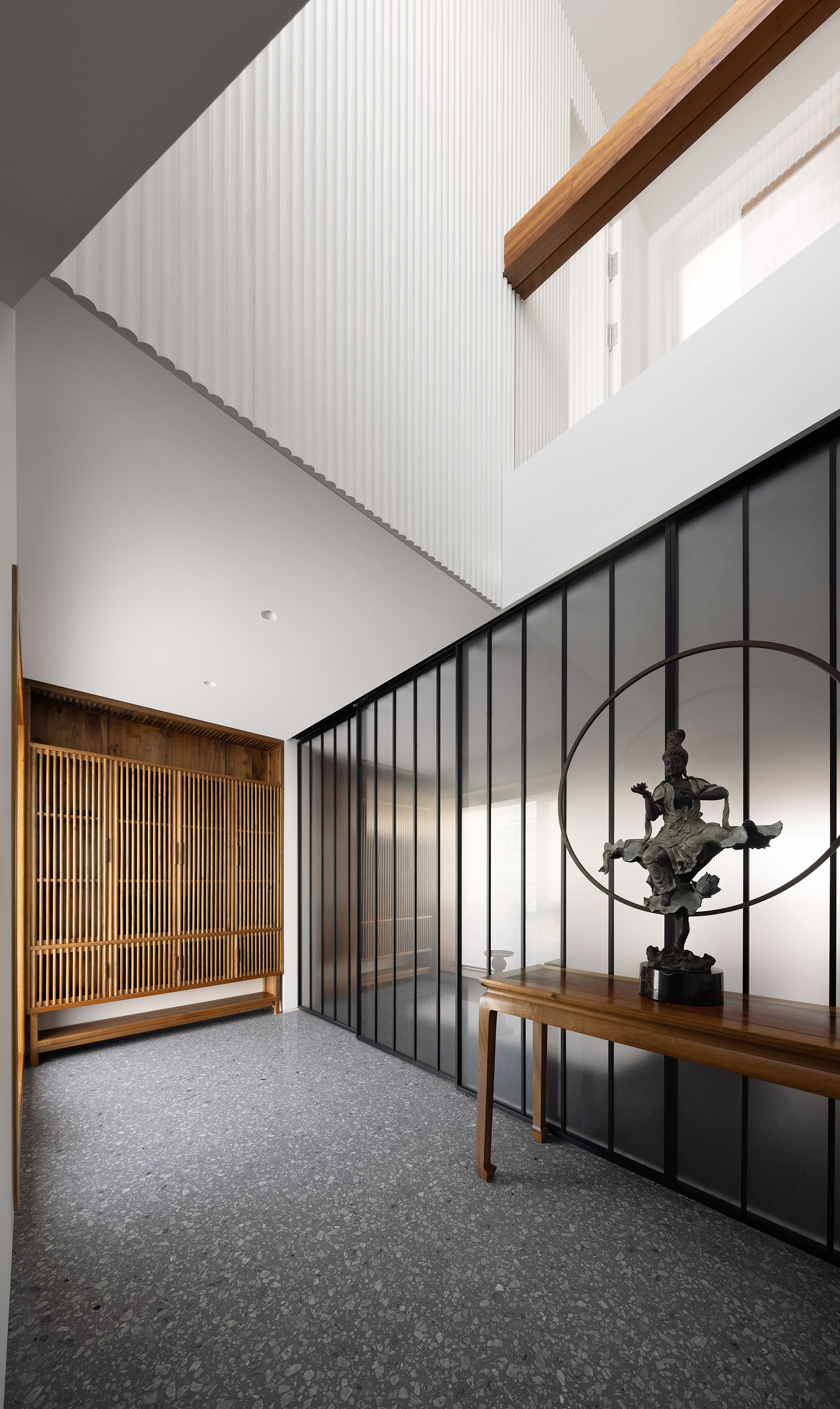
From the Quanzhou Museum of Contemporary Art to their winning new media art installation in Boston’s The Quad competition, to residential and retail projects, all of Seki and Akiyoshi’s projects share a common thread: they evoke a sense of emotion. This home, located in the centre of Beijing, is no exception.
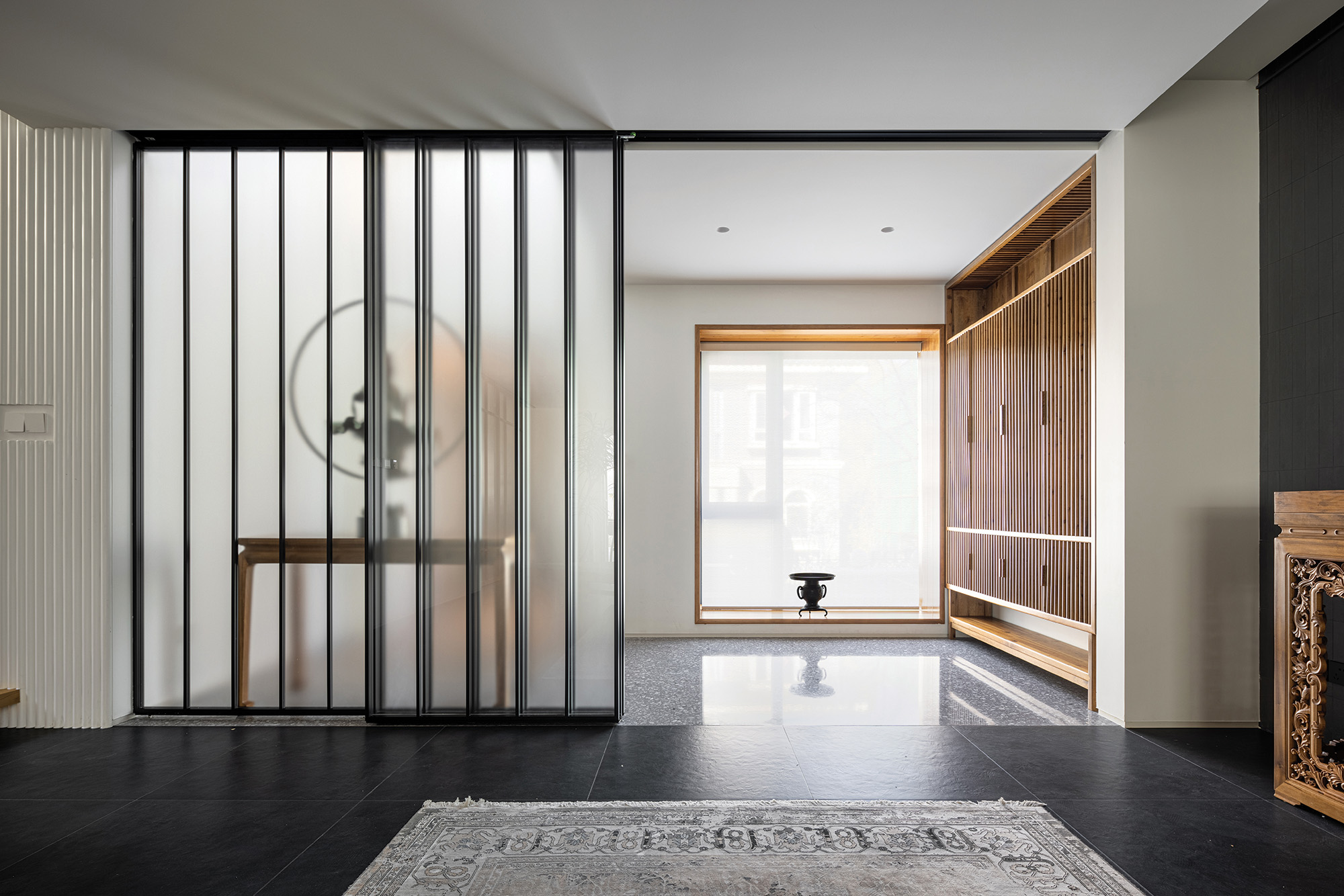
Spread over 120 square metres, the townhouse-style property is owned by a Chinese couple who tasked the team of KiKi ARCHi to introduce their traditional golden nanmu wood furniture collection into the different spaces, making it the main protagonist.
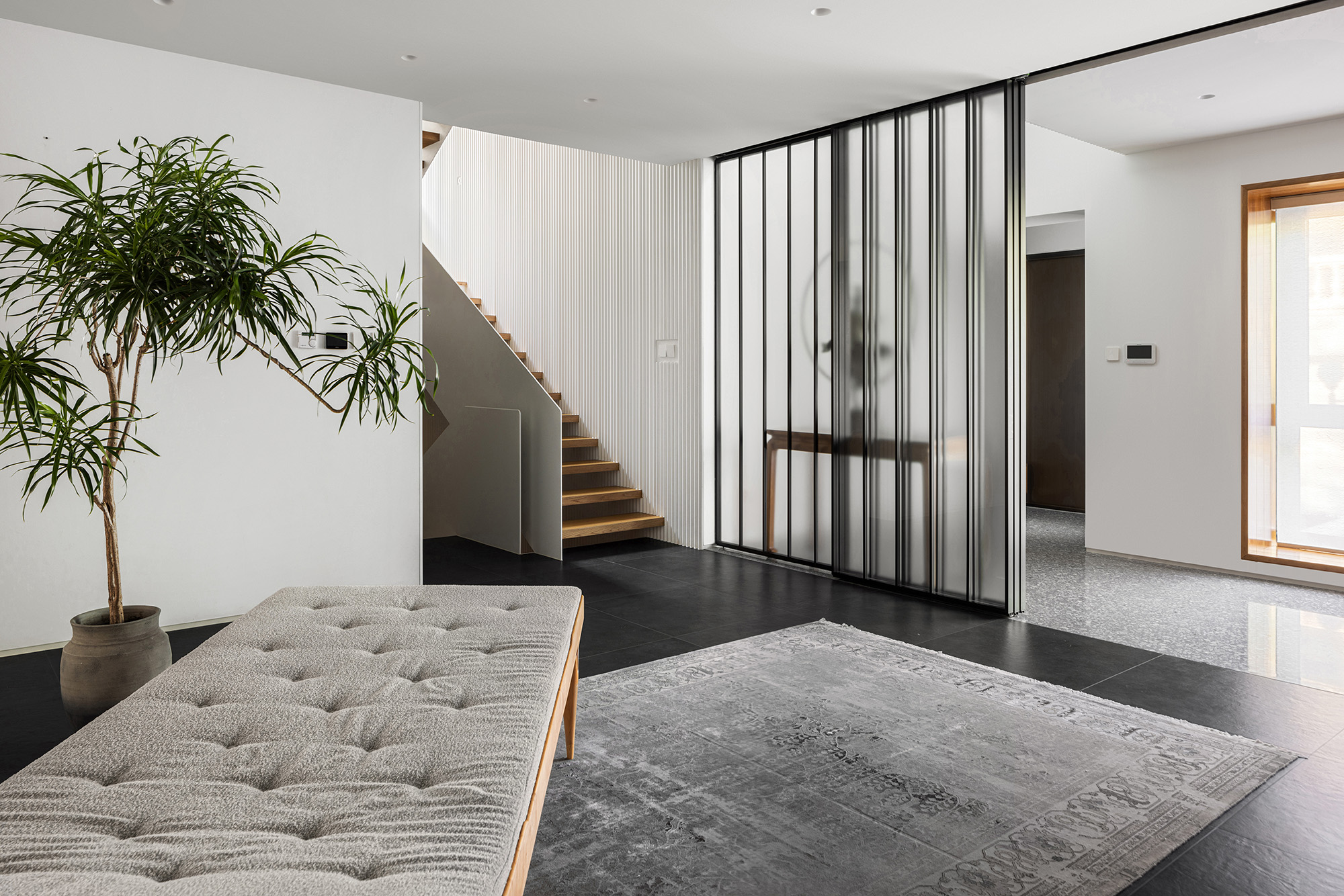
“Nanmu was a popular architectural and furniture material for the imperial family in [the] Ming and Qing dynasties, used in the forbidden city in Beijing,” the architects share.

A blank canvas with alternating bright and dark areas, characterised by pure architectural lines, is the backdrop of these large pieces that feature a classical style.

The hallway was designed to echo the concept of a patio. “The original washroom above was removed to create a five-metre-high space while bringing light from the second floor to the first floor,” the architects describe.

On the side of this preliminary space, a black-framed glass sliding door provides transition to the living room with dark flooring and walls, where a long table sits under calligraphy work placed on the wall above, referencing the past. The sofa on the carpet breaks the symmetry, for a more modern feel.
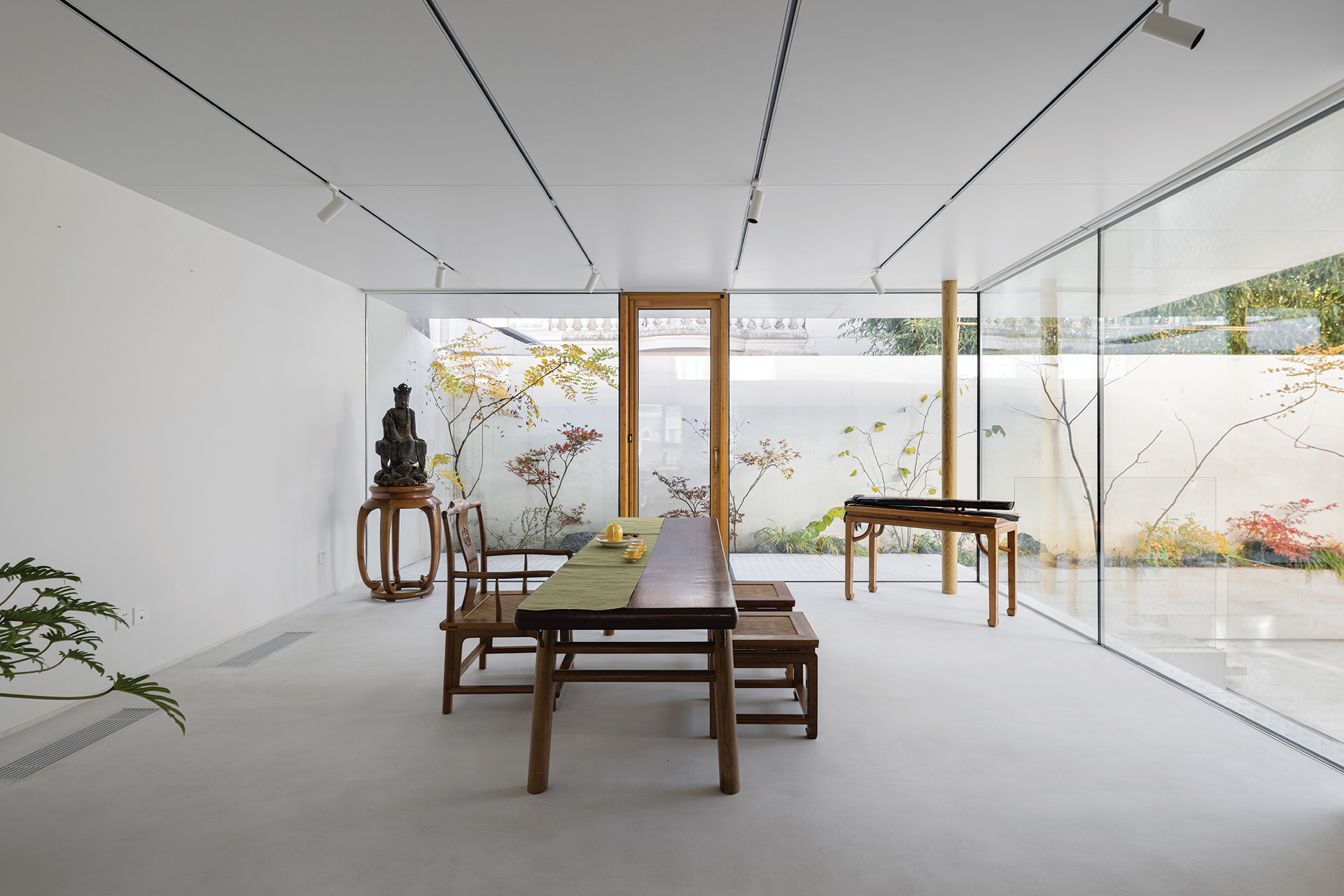
With the grey terrazzo floor acting as a visual element of continuity, the dining area features contrasting white walls with a built-in side cabinet. The grey kitchen connects to the minimalist garden terrace – with a sunken platform and an external stairway that goes to the basement – where the homeowner’s favourite tearoom is attached, with a glass partition and an aluminium roof that offers the illusion of floating.
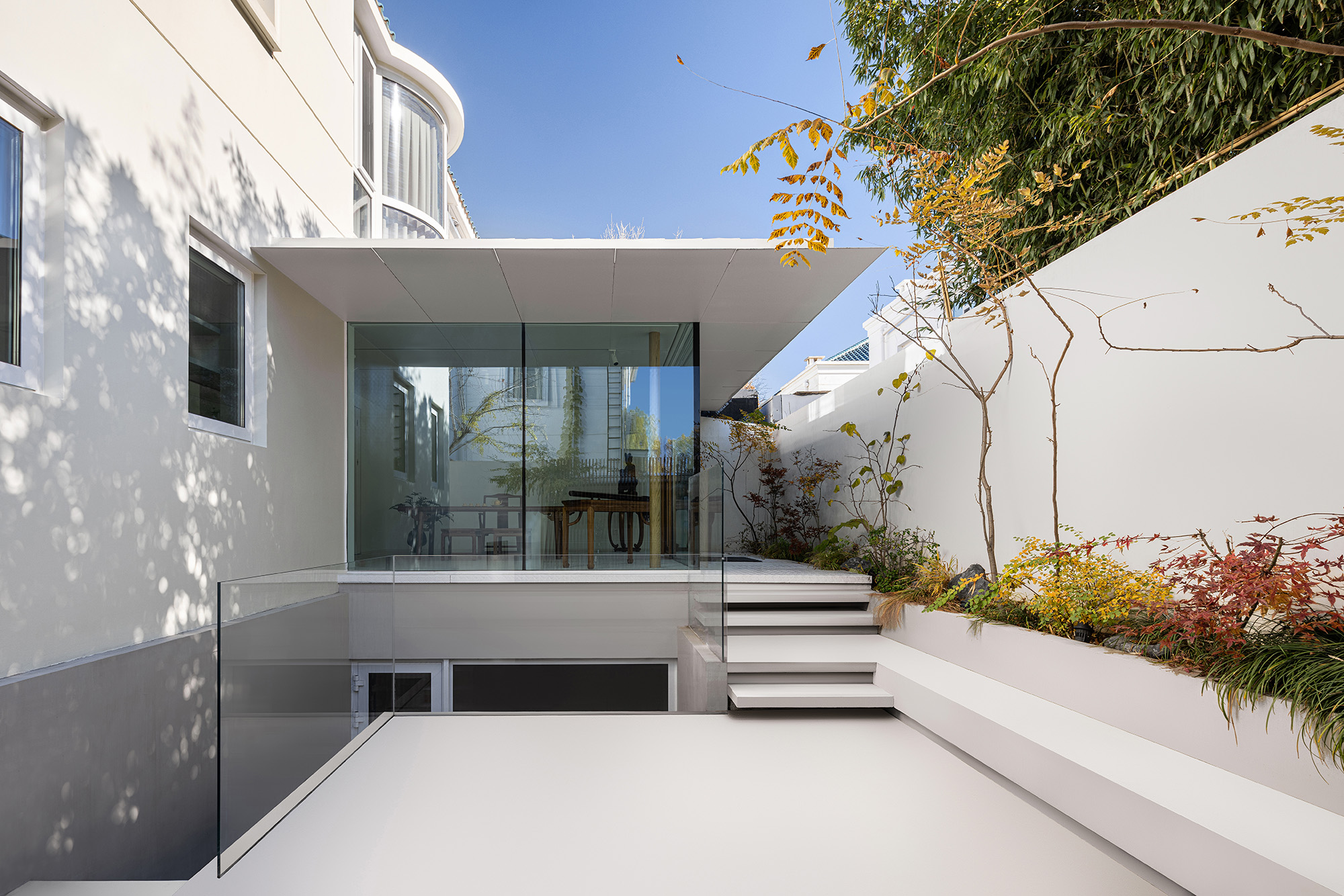
This peaceful environment, where light and shadow intertwine, offers an invitation to observe the changing landscape, depending on the season. “The concept of time seems to disappear, and a spiritual dialogue starts,” says the team.

The home reflects “the sense of ritual and inclusiveness in life,” according to the architects, who found the right balance between the traditional furniture and the architecture and interior design, through monochromatic, soft colours and texture. Leading to the upper floor, where a quiet and warm atmosphere pervades the more private areas such as the study and the main bedroom, the staircase was designed with floating steps and a one-piece handrail. Last, but not least, the attic was transformed into a small space for meditation.

“It is recorded in ancient Chinese books that golden nanmu is a fine and sturdy material with a special texture and silky lustre, emitting a delicate fragrance and being very elegant,” says the KiKi ARCHi team. “It is similar to a well-designed house – the coherent design logic creates a stable ‘inner part’ while the exquisite display presents a beautiful ‘exterior part’, which carries a lovely life for a long time together.”
The Latest
Dubai Design Week: A Retrospective
The identity team were actively involved in Dubai Design Week and Downtown Design, capturing collaborations and taking part in key dialogues with the industry. Here’s an overview.
Highlights of Cairo Design Week 2025
Art, architecture, and culture shaped up this year's Cairo Design Week.
A Modern Haven
Sophie Paterson Interiors brings a refined, contemporary sensibility to a family home in Oman, blending soft luxury with subtle nods to local heritage
Past Reveals Future
Maison&Objet Paris returns from 15 to 19 January 2026 under the banner of excellence and savoir-faire
Sensory Design
Designed by Wangan Studio, this avant-garde space, dedicated to care, feels like a contemporary art gallery
Winner’s Panel with IF Hub
identity gathered for a conversation on 'The Art of Design - Curation and Storytelling'.
Building Spaces That Endure
identity hosted a panel in collaboration with GROHE.
Asterite by Roula Salamoun
Capturing a moment of natural order, Asterite gathers elemental fragments into a grounded formation.
Maison Aimée Opens Its New Flagship Showroom
The Dubai-based design house opens its new showroom at the Kia building in Al Quoz.
Crafting Heritage: David and Nicolas on Abu Dhabi’s Equestrian Spaces
Inside the philosophy, collaboration, and vision behind the Equestrian Library and Saddle Workshop.
Contemporary Sensibilities, Historical Context
Mario Tsai takes us behind the making of his iconic piece – the Pagoda
Nebras Aljoaib Unveils a Passage Between Light and Stone
Between raw stone and responsive light, Riyadh steps into a space shaped by memory and momentum.












